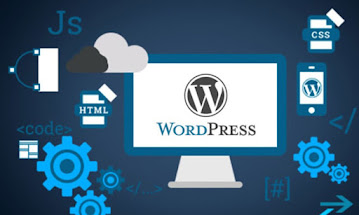Top 7 WordPress development tools for Developers
Today, it powers over 43% of all websites and supports everything from e-commerce to enterprise-grade web apps. With this evolution, the expectations from developers have also grown. This includes faster delivery, cleaner code, and seamless deployment.
That’s where the right WordPress development tools come in.
Whether you’re building high-performing themes, creating custom plugins, or delivering complete custom WordPress development service-based solutions, your toolkit determines your speed, accuracy, and stability. In this blog, we’ve handpicked the top seven tools every developer must use to streamline workflows, minimize errors, and build modern custom WordPress website development projects confidently!
Why Does Choosing the Right Tools Matter?
Every experienced developer knows that writing code is just one part of the job. The tools you use directly impact your speed, efficiency, and code quality. In WordPress development, where tight deadlines and evolving client demands are common, choosing the right set of tools becomes non-negotiable.
Whether you’re offering enterprise-grade WordPress development services or delivering lightweight custom WordPress solutions, the tools you choose can determine the long-term maintainability of the website.
Tool #1: WP-CLI—The Command Line Powerhouse
For developers who prefer speed over clicks, WP-CLI is an essential tool. It allows you to manage WordPress installations directly from the command line, skipping the dashboard entirely. From installing plugins to creating users or updating the core, every action becomes faster and scriptable.
Agencies offering WordPress development services often use WP-CLI to automate setup processes across multiple projects. It shines in deployment pipelines and staging workflows where time and consistency are critical. You can even integrate it with shell scripts to perform bulk tasks like database search-replace or multisite management.
If efficiency is part of your coding DNA, WP-CLI deserves a permanent spot in your development toolkit.
Tool #2: Query Monitor—See What WordPress Is Doing
When a WordPress site slows down or behaves unexpectedly, debugging without insight is like navigating in the dark. Query Monitor brings visibility into every layer of WordPress operations. It lets developers inspect database queries, PHP errors, REST API calls, and HTTP requests, all from within the admin dashboard.
This tool becomes indispensable when you’re troubleshooting performance issues, especially in large, data-heavy websites. Its real-time feedback helps you quickly trace the source of lag or failure, whether it’s a slow query or a plugin conflict.
Among all WordPress development tools, Query Monitor stands out for combining depth of analysis with ease of use. It turns guesswork into precision, which every serious developer needs.
Tool #3: Advanced Custom Fields—Add Power to Your Content Structure
Custom content demands flexibility beyond what the default WordPress setup offers. Advanced Custom Fields (ACF) empowers developers to create and manage complex field groups without touching the database directly. You can build structured layouts, custom post types, and unique backend interfaces tailored to specific project needs.
Whether you’re building client dashboards, portfolio sites, or data-driven applications, ACF keeps your content structured and easy to manage. Its intuitive interface also bridges the gap between development and content teams.
Within the realm of WordPress development tools, ACF is often the first plugin developers install when they need to turn WordPress into something smarter and more adaptable than a blog engine.
Tool #4: Local WP—Your Instant Local Dev Environment
Setting up a development environment should never slow down the start of a project. Local WP makes local WordPress site creation a breeze with one-click installation, automatic SSL, and built-in tools for testing.
This desktop application is perfect for developers who want to prototype, experiment, or debug in isolation before pushing anything live. It supports PHP version switching, live link sharing for client previews, and seamless integration with deployment services like Flywheel and WP Engine.
Among all WordPress development tools, LocalWP is the most user-friendly for rapid environment setup. Whether you’re freelancing or managing dozens of projects, it ensures your development stays clean, fast, and risk-free.
Tool #5: Git & GitHub—Version Control That Saves Projects
Version control is the foundation of any reliable development process. With Git and GitHub (or GitLab), you gain complete control over your codebase. You can track changes, revert mistakes, manage branches, and collaborate with ease.
For WordPress developers working on themes, plugins, or full-scale applications, Git ensures you never lose your progress. It also supports cleaner workflows, especially when multiple contributors are working on the same project.
Whether you’re a solo developer or part of a distributed team, using Git alongside a repository hosting platform is more than a best practice. It’s essential for professional-grade development and long-term maintainability.
Tool #6: Theme Check—Build Themes That Meet the Standard
Before a theme goes live or gets submitted to the WordPress repository, it must follow strict coding standards. Theme Check helps you validate your theme against those requirements without manually auditing every file.
This plugin runs automated tests to detect deprecated functions, security risks, and structural issues. It also checks for compliance with accessibility and internationalization guidelines, ensuring your theme is both inclusive and globally usable.
For developers serious about releasing production-grade themes or maintaining code quality across multiple projects, Theme Check is a must-have. It acts like a checklist that catches what human eyes often miss during manual reviews.
Tool #7: Elementor or Gutenberg Suite—Visual Design, Coded Right
Not every client project requires hand-coded templates. In many cases, speed and flexibility are the priority, and that’s where visual builders shine. Tools like Elementor or enhanced Gutenberg block libraries give developers the power to prototype quickly without compromising code structure.
These builders are especially useful during client reviews or MVP development. Instead of adjusting code after every round of feedback, you can make layout tweaks in real time.
Visual tools have earned their place in modern development workflows. When used correctly, they enhance delivery speed while still respecting performance and accessibility standards.
Bottomline
Every successful WordPress project is built on more than just code. It is built on decisions, and one of the most important decisions a developer makes is choosing the right tools. Whether you are building complex web applications, custom client dashboards, or high-converting landing pages, the efficiency of your workflow often defines the outcome.
The tools listed in this blog are not just helpful add-ons. They are essential building blocks for a reliable, scalable, and professional development environment. They support faster delivery, improve testing accuracy, reduce downtime, and elevate the entire quality of the build process.
Investing time to master these solutions is a strategic step forward for any developer or agency. With the right set of WordPress development tools in place, you can focus more on solving real problems and less on repetitive setup, debugging, or deployment obstacles.
ARTICLE SOURCE: Top 7 WordPress development tools for Developers















